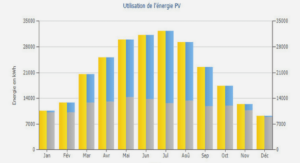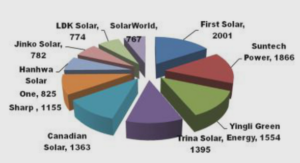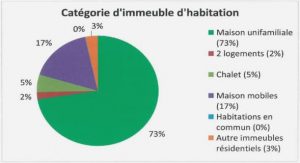Asymptotic profiles for some problems of wave equations in the Fourier space and other spaces
Energy decay of solution to plate equation with memory in Rn
This chapter aims at investigating the energy decay of solution to plate equation with memory in Rn to the following equation: u 00 + ∆ 2u + α(t) R t 0 g(t − s)∆u(s, x)ds − ∆u 0 = 0, x ∈ Rn , t ∈ R+ ∗ u(0, x) = u0(x) ∈ H1 (Rn ), u 0 (0, x) = u1(x) ∈ L 2 (Rn ), x ∈ Rn . (2.1) where n ≥ 2. It is well known that the presence of a viscoelastic term with and without the weighted function α doest not preclude the question of existence, but its effects are only on the stability of the existing solution. For the existence, we refer to the works [24], [26], [25], [31], [40], [44], [16]. This type of problems is usually encountered in viscoelasticity in various areas of mathematical physics. It was first considered by Dafermos in [15], where the general decay was discussed. The problems related to (2.1) attracted a great deal of attention in the last decades and numerous results appeared on the existence and long time behavior of solutions but their results is by now rather developed, especially in any space dimension when it comes to nonlinear problems. For the literature, in Rn we quote essentially the results of [10], [28], [29], [30], [32], [33], [45]. In [29],the authors showed that, for compactly supported initial data and for an exponentially decaying relaxation function, the decay of the energy of solution of a linear Cauchy problem related of (2.1) is polynomial. The finite-speed propagation is used to compensate for the lack of Poincares inequality. In [28], the author looked into a linear Cauchy viscoelastic equation with density. His study included the exponential and polynomial rates, where he used the spaces weighted by density to compensate for the lack of Poincare’s inequality. The same problem treated in [28], was considered in [30], where they consider a Cauchy problem for a viscoelastic wave equation. Under suitable conditions on the initial data and the relaxation function, they prove a polynomial decay result of solutions. Conditions used, on the relaxation function g and its derivative g0 are different from the usual ones. Ikehata in [24] considered, in the one-dimensional half space, the mixed problem of the equation vtt − vxx + vt = 0 (2.2) with a weighted initial data and presented a new decay estimate of solutions which can be also derived for the Cauchy problem in Rn . Let us mention that a pioneer question on the long time asymptotic of strongly damped wave equations in [25], where the authors studied the Cauchy problem for abstract dissipative equations in Hilbert spaces generalizing wave equations with strong damping terms in Rn or exterior domains utt(t) + Au(t) + Au0 (t) = 0, t ∈ (0, ∞). (2.3) u(0) = u0, ut(0) = u1, (2.4) where A : D(A) ⊂ H → H is a nonnegative self-adjoint operator in (H, k.k) with a dense domain D(A). Using the energy method in the Fourier space and its generalization based on the spectral theorem for self-adjoint operators. Their main result was a combination of solutions of diffusion and wave equations.
Decay rate estimate of solution to damped wave equation with memory term in Fourier spaces
Preliminaries and position of the problem
Let us consider the weak-viscoelastic case in the following problem: u 00 − ∆u − ∆u 0 + α(t) R t 0 g(t − s)∆u(s, x)ds = 0, x ∈ Rn , t ∈ R+ ∗ , u(0, x) = u0(x) ∈ H1 (Rn ), u 0 (0, x) = u1(x) ∈ L 2 (Rn ), x ∈ Rn , (3.1) where n ≥ 2. It is well known that the presence of a viscoelastic term with and without the weighted function α does not preclude the question of existence, but its effects are on the stability of the existing solution. For the existence, we refer the reader to works in [24], [26], [25], [31], [40], [44], [16] and [57]. The energy of u at time t is given by E(t) = 1 2 ku 0 k 2 2 + 1 2 1 − α(t) Z t 0 g(s)ds k∇uk 2 2 + 1 2 α(t)(g ◦ ∇u), (3.2) 22 CHAPITRE .3. Decay rate estimate of solution to damped wave equation with memory term in Fourier spaces 23 and the following energy functional law holds. E 0 (t) = 1 2 α(t)(g 0 ◦ ∇u) − 1 2 α(t)g(t)k∇uk 2 2 − k∇u 02 2 + 1 2 α 0 (t)(g ◦ ∇u) − 1 2 α 0 (t) Z t 0 g(s)dsk∇uk 2 2 . (3.3) This type of problems is usually encountered in viscoelasticity in various areas of mathematical physics. It was first considered by Dafermos in [15], where the general decay was discussed. The problems related to (3.1) attracted a great deal of attention in the last decades and numerous results appeared on the existence and long time behavior of solutions but their results is by now rather developed, especially in any space dimension when it comes to nonlinear problems. For the literature, in Rn we quote essentially the results of [10], [28], [29], [30], [32], [45]. In [29], the authors showed that, for compactly supported initial data and for an exponentially decaying relaxation function, the decay of the energy of solution of a linear Cauchy problem related of (3.1) is polynomial. The finite-speed propagation is used to compensate for the lack of Poincaré’s inequality. In [28], the author looked into a linear Cauchy viscoelastic equation with density. His study included the exponential and polynomial rates, where he used the spaces weighted by density to compensate for the lack of Poincaré’s inequality. The same problem treated in [28], was considered in [30], where they consider a Cauchy problem for a viscoelastic wave equation. Under suitable conditions on the initial data and the relaxation function, they prove a polynomial decay result of solutions. Conditions used, on the relaxation function g and its derivative g0 are different from the usual ones. Ikehata in [24] considered, in the one-dimensional half space, the mixed problem of the equation vtt − vxx + vt = 0 (3.4) with a weighted initial data and presented a new decay estimates of solutions which also can be derived for the Cauchy problem in Rn . Let us mention that a pioneer question on the long time asymptotic of strongly damped wave equations in [25].The authors, studied the Cauchy problem for abstract dissipative equations in Hilbert spaces generalizing wave equations with strong damping terms in Rn or exterior domains utt(t) + Au(t) + Au0 (t) = 0, t ∈ (0, ∞). (3.5) CHAPITRE .3. Decay rate estimate of solution to damped wave equation with memory term in Fourier spaces 24 u(0) = u0, ut(0) = u1, (3.6) where A : D(A) ⊂ H → H is a nonnegative self-adjoint operator in (H, k.k) with a dense domain D(A). Using the energy method in the Fourier space and its generalization based on the spectral theorem for self-adjoint operators, their main result was a combination of solutions of diffusion and wave equations. Recently, in [26], Ryo Ikehata considered the Cauchy problem in Rn for strongly damped wave equations (3.5) with A = −∆. He derived asymptotic profiles of its solutions with weighted L1,1(Rn ) data by using a method introduced in [24] and developed in [25]. The same author, extends his results in [23] when the initial data belongs to a weighted L1,2(Rn ) space.
1 Functional analysis preliminaries |





